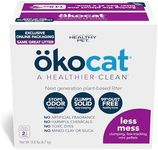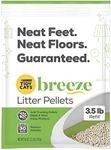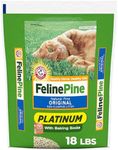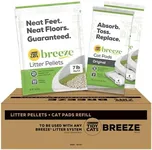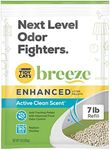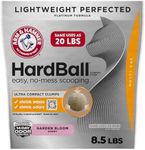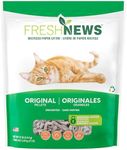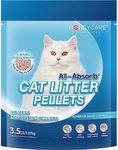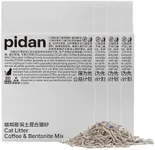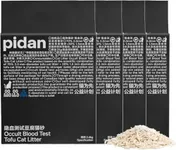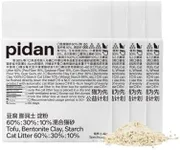Buying Guide for the Best Pellet Litter
Choosing the right pellet litter for your pet is crucial for their comfort and health, as well as for maintaining a clean and odor-free environment. Pellet litter is a popular choice for many pet owners due to its absorbency, odor control, and eco-friendliness. When selecting pellet litter, it's important to consider several key specifications to ensure you pick the best option for your pet's needs and your household preferences.MaterialPellet litter can be made from various materials such as wood, paper, corn, or wheat. The material affects absorbency, odor control, and environmental impact. Wood pellets are highly absorbent and control odors well, while paper pellets are softer and more suitable for pets with sensitive paws. Corn and wheat pellets are biodegradable and eco-friendly. Choose a material based on your pet's comfort, any allergies they may have, and your preference for sustainability.
AbsorbencyAbsorbency refers to how well the litter can soak up moisture. High absorbency is important to keep the litter box dry and reduce the frequency of cleaning. Wood and paper pellets generally offer high absorbency. If you have multiple pets or want to minimize cleaning, opt for a litter with higher absorbency. For single pets or if you don't mind more frequent cleaning, a medium absorbency might suffice.
Odor ControlOdor control is the litter's ability to neutralize or mask unpleasant smells. This is crucial for maintaining a fresh-smelling home. Wood pellets are known for their natural odor control properties, while some paper and corn pellets may have added odor-neutralizing agents. If odor is a major concern, look for litter with strong odor control features. For less sensitive noses or well-ventilated areas, moderate odor control might be adequate.
Dust LevelsDust levels refer to the amount of dust produced when handling the litter. Low-dust litter is important for pets with respiratory issues and for keeping your home clean. Wood and paper pellets typically produce less dust compared to clay-based litters. If your pet has respiratory problems or you want to minimize dust in your home, choose a low-dust option. For pets without respiratory issues, a moderate dust level might be acceptable.
Clumping AbilityClumping ability is the litter's capacity to form solid clumps when wet, making it easier to scoop out waste. While many pellet litters do not clump, some newer formulations offer this feature. Clumping litter can simplify cleaning and reduce waste. If you prefer easy scooping and less frequent full litter changes, look for clumping pellet litter. If you don't mind more thorough cleaning sessions, non-clumping options are also effective.
BiodegradabilityBiodegradability refers to how easily the litter breaks down in the environment. Eco-friendly options like wood, paper, corn, and wheat pellets are biodegradable and compostable. This is important for reducing environmental impact. If sustainability is a priority for you, choose biodegradable litter. If environmental concerns are less of a priority, you may consider other factors more heavily.
Pellet SizePellet size can affect your pet's comfort and the litter's performance. Smaller pellets are softer on paws and may be preferred by smaller pets or those with sensitive feet. Larger pellets are less likely to track outside the litter box and can be more absorbent. Consider your pet's size and comfort when choosing pellet size. For larger pets or those prone to tracking, larger pellets might be better. For smaller or sensitive pets, smaller pellets could be more suitable.

